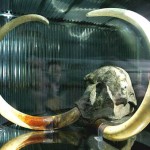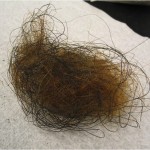 Scientists at Penn State think all it would take to cook up a woolly mammoth in the lab is a little genome decoding and 10 million bucks. Cheap! Steve Austin was way smaller than a mammoth and it cost 60% that price to make him better, stronger, faster.
Scientists at Penn State think all it would take to cook up a woolly mammoth in the lab is a little genome decoding and 10 million bucks. Cheap! Steve Austin was way smaller than a mammoth and it cost 60% that price to make him better, stronger, faster.
There is no present way to synthesize a genome-size chunk of mammoth DNA, let alone to develop it into a whole animal. But Dr. Schuster said a shortcut would be to modify the genome of an elephant’s cell at the 400,000 or more sites necessary to make it resemble a mammoth’s genome. The cell could be converted into an embryo and brought to term by an elephant, a project he estimated would cost some $10 million. “This is something that could work, though it will be tedious and expensive,” he said.
 “Could” being the operative word. There are many ifs involved in resurrecting the mammoth. Ancient DNA is usually damaged and/or contaminated beyond recovery, although the DNA in hair, protected by keratin, tends to be in much better condition.
“Could” being the operative word. There are many ifs involved in resurrecting the mammoth. Ancient DNA is usually damaged and/or contaminated beyond recovery, although the DNA in hair, protected by keratin, tends to be in much better condition.
Also, the DNA of living cells takes ages to modify one site at a time, but there too our Penn State Frankensteins have an ace in a hole: Dr. George Church, a genome technologist who claims he has a new method that can modify 50,000 genomic sites at once.
Yes, yes, but they can make a pig-sized woolly mammoth for the designer pet market? They’d make that 10 mill back in a week, guaranteed.
Provided they can guarantee both that these voracious carnivores will never spontaneously produce males and begin breeding on their own, and that the electricity for security fences and safari jeeps will never go out, I’m completely behind this amazing thrill ride of a scientific project!
Clevah guhl.
:love:
Can you give a estimate when we may see a prehistoric mammal re-created? Soon the Indian Tiger will need to be made in a lab, so why not do it now.
Thank you
I couldn’t possibly say. I doubt it’ll happen in my lifetime.
wow! I’ve learned new things!
http://www.thehistoryblog.com/wp-includes/images/smilies/notworthy.gif
As cool as this may be, if it were at all possible to resurrect prehistoric animals, they should never be released into the wild.
They could become invasive species, and wreck the delicate balance of modern ecosystems; just the same as modern species transported from one area of the world to another. Like the Japanese thorn bushes that are overtaking some areas of Northeastern US wilderness, for instance.
Aw, not even tiny pig-sized woolly mammoths? Because how adorable would they be?